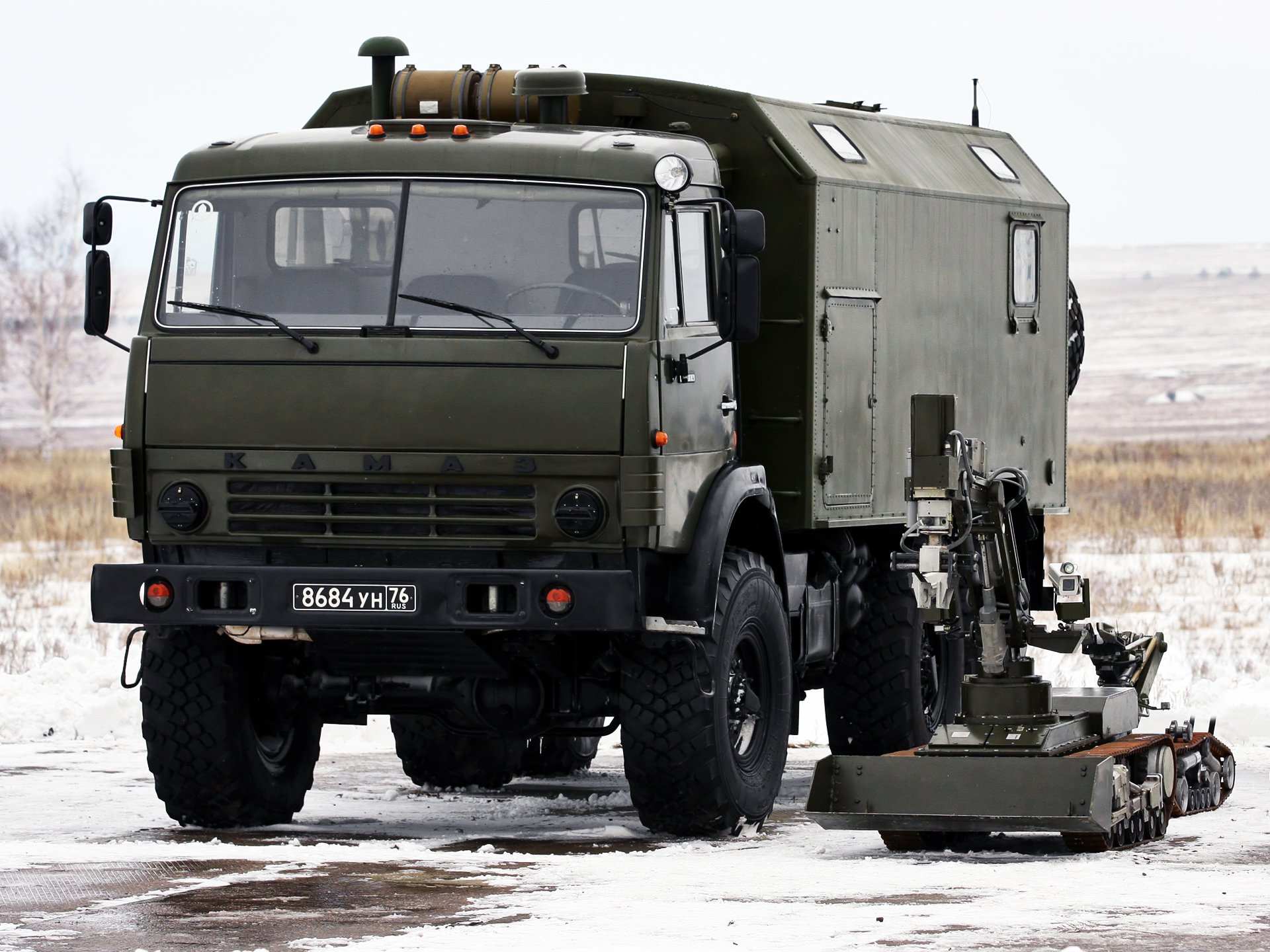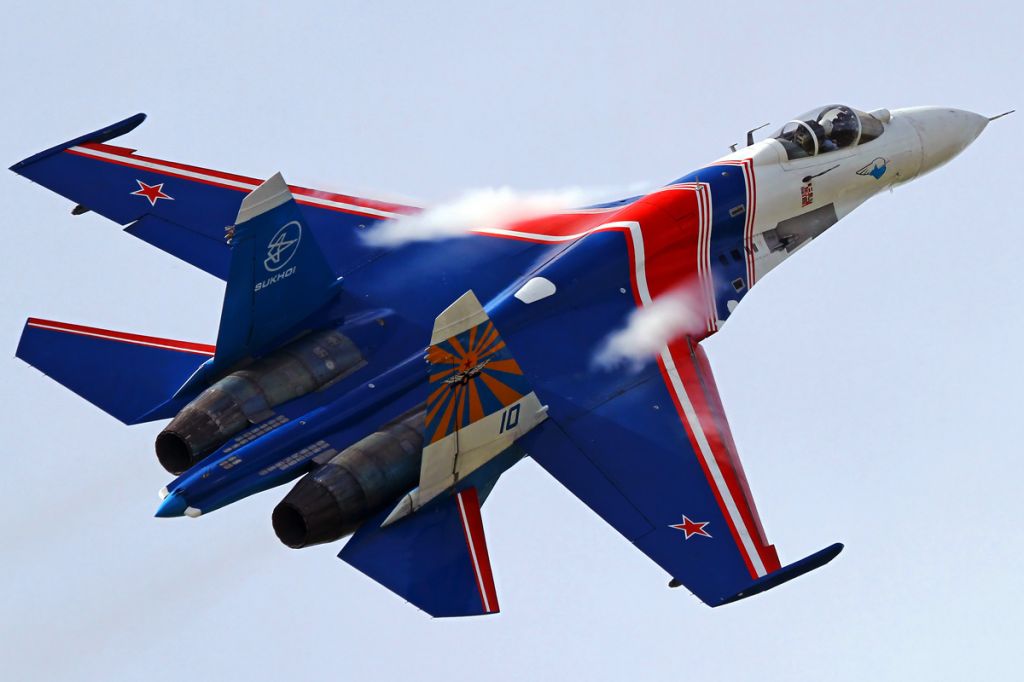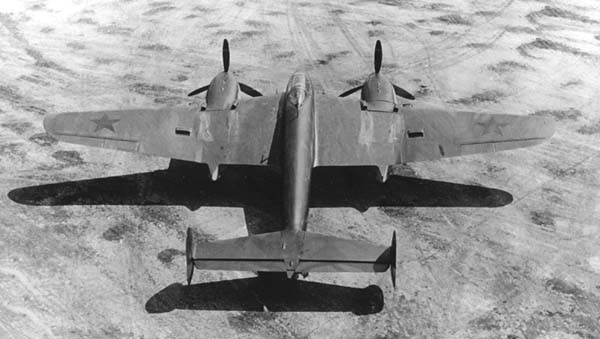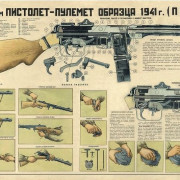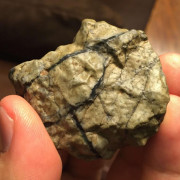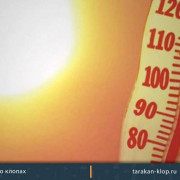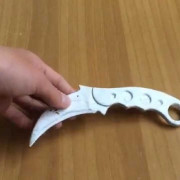Истребитель p-51 «мустанг»
Содержание:
- Содержание
- В компьютерных играх
- Тактико-технические характеристики
- Как применять ромашку
- Usage in battles
- Тактико-технические характеристики
- Литература
- External links
- Литература
- История
- Литература
- Armaments
- Основные модификации P-51 «Mustang»:
- Ил-112 – это прошлое или будущее
- Конструкция истребителя P-51 «Мустанг»
- Эксплуатация и боевое применение истребителя «Спитфайр»
- Литература
- Литература
- История[править]
- Сравнительная таблица моделей
- History
- Аварии и катастрофы[править | править код]
- Права
- History
- External links
- General info
Содержание
В компьютерных играх
- Наиболее проработанный Мустанг с полностью функциональной кабиной можно увидеть в Digital Combat Simulator, более простые реализации самолёта в серии игр «Ил-2 штурмовик» и Strike Fighters 2 Israel.
- В игре «War Thunder» имеется возможность исследовать и приобрести этот истребитель.
- В игре «Simple Planes» один из изначально доступных самолётов.
- Один из истребителей американской Eighth Air Force в игре «Secret Weapon of the Luftwaffe».
- Также присутствует в различных модификациях в игре «War Wings».
- В игре «Grand Theft Auto: San Andreas» этот самолёт известен под названием «Rustler».
- В игре «Grand Theft Auto Online» этот самолёт известен под названием «P-45 Nokota».
- В игре «Call of Duty 2» этот самолёт встречается в американской кампании.
- В игре Microsoft Flight Simulator X можно полетать на нём в дополнении Acceleration.
- В игре Men of War: Assault Squad 2 — при прохождении одиночных миссий за американскую сторону можно вызвать авиаудар, который будет нанесён именно этим самолётом. Также в миссии из DLC «Iron Fist» также за американскую сторону в конце задания появляются 2 P-51
Тактико-технические характеристики
Приведены характеристики модификации P-51D.
Источник данных: Ильин, 1996, стр. 24; Loftin, 1985; Котельников, 2010, стр. 55-61.
- Технические характеристики
- Экипаж: 1 (пилот)
- Длина: 9,83 м
- Размах крыла: 11,27 м
- Высота: 4,16 м
- Площадь крыла: 21,83 м²
- Коэффициент удлинения крыла: 5,86
- Масса пустого: 3466 кг
- Нормальная взлётная масса: 4585 кг
- Максимальная взлётная масса: 5493 кг
- Объём топливных баков: 1000 л
- Силовая установка: 1 × 12-цилиндровый V-образный жидкостного охлаждения Packard V-1650-7
- Мощность двигателей: 1 × 1450 л. с. (1 × 1066 кВт (взлётная))
- Воздушный винт: четырёхлопастной «Hamilton Std.»
- Диаметр винта: 3,4 м
- Коэффициент лобового сопротивления при нулевой подъёмной силе: 0,0163
- Эквивалентная площадь сопротивления: 0,35 м²
- Лётные характеристики
- Максимальная скорость:
- на уровне моря 600 км/ч
- на высоте: 704 км/ч
- Крейсерская скорость: 580 км/ч
- Скорость сваливания: 160 км/ч
- Практическая дальность: 1520 км (на 550 м)
- Перегоночная дальность: 3700 км (с ПТБ)
- Практический потолок: 12 741 м
- Скороподъёмность: 17,7 м/с
- Нагрузка на крыло: 212 кг/м²
- Тяговооружённость: 238 Вт/кг
- Длина разбега: 396 м
- Аэродинамическое качество: 14,6
- Вооружение
- Стрелково-пушечное: 6 × 12,7 мм пулемётов M2 в крыле, ближние к фюзеляжу по 400 патр., остальные по 270 патр.
-
Неуправляемые ракеты:
- 6 × ракет M8 в трубчатых направляющих M10 или M14 или M15
- 10 × 127 мм ракет HVAR (вместе с ПТБ — 6 ракет)
- Бомбы: 2 × до 454 кг под крылом
- Подвесные топливные баки: 2 × 284 л или 409 л под крылом
Как применять ромашку
Usage in battles
In an RPG the Mustang would be a rogue, the damage dealer. Quickly darting in and out of combat to deal devastating blows, the P-51 in War Thunder is a DPS main, too. Featured playstyles are Boom & Zoom, repeatedly diving on enemies and returning up high, and Boom & Run, flying into danger zone, picking of a target and retreating, all while running at top speed. Coupled with its manoeuvrability and acceleration deficits, the P-51 punishes any pilot who does not play to its strength, namely the top speed. Only late war or diving aircraft are able to catch a Mustang on the run and for the latter only with the correct timing and plenty of altitude to burn. Maintaining a cool head and areal observation are important. Retreating may look the cowardice choice, but with the speed to disengage many options open up for reversals. Note, do not perform flat turns, but rather slow, deliberate high Yo-Yos or Immelmanns for turning around. A careful approach when leading up for a shot helps in conserving precious momentum, too.
In Arcade Battles the option for in-air reloads may tempt the pilot to spray & pray and dump all the ammunition. However, with the inaccuracy issues and the short fire windows, a more deliberate approach is necessary. Waiting outside a furball or dogfight for the right moment to intercept is key, as the key role for the Mustang is heavy fire support. This is especially helpful against armoured attackers such as the Stuka or IL-2. Due to the lack of climb rate and poor altitude performance, bombers should not be sought out. In general the P-51 plays akin to many heavy fighters in Arcade mode.
In Realistic Battles the combat role is a tricky game. Lacking climb rate and high altitude performance the Mustang pilot needs to wait for the combat to come down to about 4,000 m (13,000 ft). Climbing should be done away from the expected combat zone (a.k.a. side-climbing) and at 20° with or 14° without WEP. At this point initial combat should be Boom & Run, utilizing the superior top speed to avoid combat while the enemy is focused on other team mates. Once the hostiles have dropped to a lower altitude Boom & Zooming can be engaged in. With 125 rounds per gun the fighter has got plenty of ammo to kill about six aircraft and with 30 min of fuel minimum, returning to base will be a rare occurrence. Overall this is a support fighter as in the current climbing meta engagements against higher flying interceptor-fighters are often deadly, as the Mustang then lacks the critical ability to choose the time of engagement.
Simulator Battles is where the P-51 (NA-91) truly shines. Flying at top speed with military rated power (100%) keeps the engine cool and enemies usually far away at one’s tail. Most of all combat happens slightly below the Mustang’s preferred altitude and the cockpit view is great, albeit with limited rearward view. Without the instructor the manoeuvrability markedly improves in comparison, for the P-51 has generous stall characteristics and is an overall stable gun platform, as long as one does not pull the trigger. Only the lack of acceleration in prolonged dogfights is a trap that even experienced pilots still fall into. An emergency dive to top speed will however fix this, if the pilot remembered to keep some altitude. And one should, for the greatest advantage is the ability to disengage any unfavourable battle and like with many things, the early Mustangs do not disappoint.
Manual Engine Control
| MEC elements | ||||||
|---|---|---|---|---|---|---|
| Mixer | Pitch | Radiator | Supercharger | Turbocharger | ||
| Oil | Water | Type | ||||
| Not controllable | ControllableAuto control available | Not controllableNot auto controlled | ControllableAuto control available | Combined | Not controllable1 gear | Not controllable |
Pros and cons
Pros:
- Great flight performance
- Great dive-speed and acceleration
- High energy retention
- Good performance at high speeds
- Good roll rate
- Powerful armament
- Gains access to British belt load-outs, incl. the devastating air-targets belt
- Very efficient at destroying bombers
- 20 mm guns on the Mustang are mounted in close proximity, dealing a deadly double punch when hitting
- Can easily tackle higher BR foes
- Can be very deadly in the hands of a skilled pilot
Cons:
- Mediocre climb rate
- Low maximum altitude
- No separate gun control
- No payload options available
- Firing guns slows the plane down
- Poor visibility in simulator mode
- Hispano cannons overheat extremely quickly and are inaccurate unless upgraded
- Low ammo capacity compared to machine gun-armed variants
- Priority target when in AB mode due to its reputation of destroying planes with relative ease, smart players will try to eliminate the P-51 first.
- Minimal elevator authority without the engine producing net thrust as the plane relies heavily on streamline effect along the tail for elevator authority. Aircraft should not be landed with flaps down without an engine.
Тактико-технические характеристики
Приведены характеристики модификации P-51D.
Источник данных: Ильин, 1996, стр. 24; Loftin, 1985; Котельников, 2010, стр. 55-61.
- Технические характеристики
- Экипаж: 1 (пилот)
- Длина: 9,83 м
- Размах крыла: 11,27 м
- Высота: 4,16 м
- Площадь крыла: 21,83 м²
- Коэффициент удлинения крыла: 5,86
- Масса пустого: 3466 кг
- Нормальная взлётная масса: 4585 кг
- Максимальная взлётная масса: 5493 кг
- Объём топливных баков: 1000 л
- Силовая установка: 1 × 12-цилиндровый V-образный жидкостного охлаждения Packard V-1650-7
- Мощность двигателей: 1 × 1450 л. с. (1 × 1066 кВт (взлётная))
- Воздушный винт: четырёхлопастной «Hamilton Std.»
- Диаметр винта: 3,4 м
- Коэффициент лобового сопротивления при нулевой подъёмной силе: 0,0163
- Эквивалентная площадь сопротивления: 0,35 м²
- Лётные характеристики
- Максимальная скорость:
- на уровне моря 600 км/ч
- на высоте: 704 км/ч
- Крейсерская скорость: 580 км/ч
- Скорость сваливания: 160 км/ч
- Практическая дальность: 1520 км (на 550 м)
- Перегоночная дальность: 3700 км (с ПТБ)
- Практический потолок: 12 741 м
- Скороподъёмность: 17,7 м/с
- Нагрузка на крыло: 212 кг/м²
- Тяговооружённость: 238 Вт/кг
- Длина разбега: 396 м
- Аэродинамическое качество: 14,6
- Вооружение
- Стрелково-пушечное: 6 × 12,7 мм пулемётов M2 в крыле, ближние к фюзеляжу по 400 патр., остальные по 270 патр.
-
Неуправляемые ракеты:
- 6 × ракет M8 в трубчатых направляющих M10 или M14 или M15
- 10 × 127 мм ракет HVAR (вместе с ПТБ — 6 ракет)
- Бомбы: 2 × до 454 кг под крылом
- Подвесные топливные баки: 2 × 284 л или 409 л под крылом
Литература
External links
| North American Aviation | |
|---|---|
| Fighters | P-51 · P-51A · P-51C-10 · P-51D-5 · P-51D-10 · P-51D-20-NA · P-51D-30 · P-51H-5-NA · F-82E |
| Attackers | A-36 |
| PBJ-1H · PBJ-1J | |
| Bombers | B-25J-1 · B-25J-20 |
| Jet Fighters | FJ-4B · FJ-4B VMF-232 |
| F-86A-5 · F-86F-2 · F-86F-25 · F-86F-35 | |
| F-100D | |
| Export / Licence | ␗B-25J-30 · ▂B-25J-30 |
| ▄Mustang Mk IA · ␗P-51D-20 · J26 · ␗P-51K | |
| ␗F-86F-30 · F-86F-30 ▅ · F-86F-40 ▅ · F-86F-40 JASDF▅ · ␗F-86F-40 · ▀F-86K · ▄F-86K (Italy) · ▄F-86K (France) | |
| ␗F-100A · ▄F-100D | |
| The North American Aviation allowed Canadair Limited to license-build the F-86 as the CL-13 for use in Canada and to export to Europe. | |
| The North American Aviation allowed Fiat to license-build the F-86K for the Italian Air Force though another 120 NAA built F-86Ks were also sold to the Italians. | |
| See Also | Mitsubishi Heavy Industries · Canadair Limited · Fiat Aviation |
| USA fighters | |
|---|---|
| P-26 Peashooter | P-26A-33 · P-26A-34 · P-26A-34 M2 · P-26B-35 |
| P-36 Hawk | P-36A · Rasmussen’s P-36A · P-36C · P-36G |
| P-39 Airacobra | P-400 · P-39N-0 · P-39Q-5 |
| P-40 | P-40C · P-40E-1 · P-40E-1 TD · P-40F-10 |
| P-43 Lancer | P-43A-1 |
| P-47 Thunderbolt | P-47D-22 RE · P-47D-25 · P-47D-28 · P-47M-1-RE · ⋠P-47M-1-RE · P-47N-15 |
| P-51 Mustang | P-51 · P-51A (Thunder League) · P-51C-10 · P-51D-5 · P-51D-10 · P-51D-20-NA · P-51D-30 · P-51H-5-NA |
| P-63 Kingcobra | P-63A-5 · P-63A-10 · P-63C-5 · ␠Kingcobra |
| Prototypes | XP-55 |
| F2A Buffalo | F2A-1 · Thach’s F2A-1 · F2A-3 |
| F3F | F3F-2 · Galer’s F3F-2 |
| F4F Wildcat | F4F-3 · F4F-4 |
| F4U Corsair | F4U-1A · F4U-1A (USMC) · F4U-1D · F4U-1C · F4U-4 · F4U-4B · F4U-4B VMF-214 · F2G-1 |
| F6F Hellcat | F6F-5 · F6F-5N |
| F8F Bearcat | F8F-1 · F8F-1B |
| Other countries | ▃Ki-43-II · ▃Ki-61-Ib · ▃A6M2 · ▃Bf 109 F-4 · ▃Fw 190 A-8 · ▃Spitfire LF Mk IXc |
Литература
- Ильин В. и др. Истребитель Норт Америкэн «Мустанг». — М.: Техниформ, июль 1996. — 32 с. — (Крылья: дайджест лучших публикаций об авиации. — Вып. 5). — 2000 экз.
- Котельников В. Р. Истребитель «Мустанг». — М.: ВЭРО Пресс; Яуза; Эксмо, 2010. — 128 с. — (Война и мы. Авиаколлекция). — ISBN 978-5-699-41773-5.
- Котельников В. Р. Авиационный ленд-лиз. — М.: Фонд «Русские Витязи», 2015. — 368 с. — 1000 экз. — ISBN 985-5-9906036-3-9.
- Харук А. И. Истребители Второй мировой. — М.: Яуза; Эксмо, 2012. — 368 с. — 1500 экз. — ISBN 978-5-699-58917-3.
- P-51 Mustang. — Т. 1. — (Война в воздухе. — № 39).
- P-51 Mustang. — Т. 2. — (Война в воздухе. — № 40).
- P-51 Mustang. Техническое описание и боевое применение. — (Война в воздухе. — № 89).
- Р-51 «Мустанг». — (Война в воздухе. — № 124).
История
Самолёт был разработан и произведён компанией North American по заказу правительства Великобритании в кратчайшие сроки. Первый прототип NA-73X поднялся в воздух 26 октября 1940 года, спустя всего лишь 117 дней с момента размещения заказа на его производство.
Ранние модификации самолёта снабжались двигателем Allison V-1710, обеспечивавшим прекрасные характеристики при полёте на малой высоте, но совершенно непригодном для полётов на высотах выше 4600 метров.
В апреле 1942 года, по результатам тестов британских испытателей высотные характеристики истребителя были признаны неудовлетворительными, и встал вопрос о его замене другой моделью. Но эксперты были настолько впечатлены его маневренностью и скоростью на малых высотах, что решили пригласить специалистов из компании Rolls-Royce для дальнейших консультаций. В результате этого сотрудничества самолёт стал, в дальнейшем, оснащаться двигателем Rolls-Royce Merlin и его американским аналогом Packard V-1650. Замена двигателя позволила значительно улучшить высотные характеристики истребителя, сохранив все его преимущества при полётах на малой высоте.
Литература
- Ильин В. и др. Истребитель Норт Америкэн «Мустанг». — М.: Техниформ, июль 1996. — 32 с. — (Крылья: дайджест лучших публикаций об авиации. — Вып. 5). — 2000 экз.
- Котельников В. Р. Истребитель «Мустанг». — М.: ВЭРО Пресс; Яуза; Эксмо, 2010. — 128 с. — (Война и мы. Авиаколлекция). — ISBN 978-5-699-41773-5.
- Котельников В. Р. Авиационный ленд-лиз. — М.: Фонд «Русские Витязи», 2015. — 368 с. — 1000 экз. — ISBN 985-5-9906036-3-9.
- Харук А. И. Истребители Второй мировой. — М.: Яуза; Эксмо, 2012. — 368 с. — 1500 экз. — ISBN 978-5-699-58917-3.
- P-51 Mustang. — Т. 1. — (Война в воздухе. — № 39).
- P-51 Mustang. — Т. 2. — (Война в воздухе. — № 40).
- P-51 Mustang. Техническое описание и боевое применение. — (Война в воздухе. — № 89).
- Р-51 «Мустанг». — (Война в воздухе. — № 124).
Armaments
Offensive armament
Weapon 16 x 12.7 mm M2 Browning machine gun
Ammunition2 080 rounds
Fire rate768 shots/min
Main article: M2 Browning (12.7 mm)
The P-51D-5 is armed with:
6 x 12.7 mm M2 Browning machine guns, wing-mounted (2 x 270 rpg outer + 500 rpg inner = 2,080 total)
Suspended armament
Number of setups8
List of setups
Setup 16 x HVAR rockets
Setup 26 x M8 rocket
Setup 32 x 100 lb AN-M30A1 bomb
Setup 42 x 250 lb AN-M57 bomb
Setup 52 x 500 lb AN-M64A1 bomb
Setup 62 x 1000 lb AN-M65A1 bomb
Setup 72 x 100 lb AN-M30A1 bomb
6 x HVAR rockets
Setup 82 x 500 lb AN-M64A1 bomb
6 x HVAR rockets
Main articles: AN-M30A1 (100 lb), AN-M57 (250 lb), AN-M64A1 (500 lb), AN-M65A1 (1,000 lb)
Main articles: HVAR, M8
The P-51D-5 can be outfitted with the following ordnance:
- Without load
- 6 x HVAR rockets
- 6 x M8 rockets
- 2 x 100 lb AN-M30A1 bombs (200 lb total)
- 2 x 250 lb AN-M57 bombs (500 lb total)
- 2 x 500 lb AN-M64A1 bombs (1,000 lb total)
- 2 x 1,000 lb AN-M65A1 bombs (2,000 lb total)
- 6 x HVAR rockets + 2 x 100 lb AN-M30A1 bombs (200 lb total)
- 6 x HVAR rockets + 2 x 500 lb AN-M64A1 bombs (1,000 lb total)
Основные модификации P-51 «Mustang»:
«Мустанг» Mk.l — двигатель V-1710-39 (1150 л.с). Вооружение — 4 12,7-мм пулемета (2 синхронных фюзеляжных и 2 крыльевых; боекомплект по 400 патронов), 4 7,7-мм крыльевых пулемета (по 500 патронов). Изготовлено 620 самолетов.
Р-51 — вооружен 4 20-мм крыльевыми пушками «Испано» Mk.ll. В сентябре 1941 г. заказано 150 машин для поставки Великобритании по ленд-лизу (британское обозначение «Мустанг» Mk.lA). Часть самолетов передана ВВС Армии США и переоборудованы в фоторазведчики F-6B.
Р-51А — двигатель V-1710-81 (1200 л.с). Вооружение — 4 12,7-мм крыльевых пулемета (боекомплект 350 патронов на ствол для внутренних и 280 — для внешних); возможна подвеска двух 227-кг бомб. С февраля 1943 г. изготовлено 310, из них 50 передано Великобритании («Мустанг» Mk.ll). 35 самолетов, оборудованных АФА К-24, обозначались F-6B.
Р-51В — двигатель «Паккард» V-1650-3 (1400 л.с). Вооружение аналогично Р-51 А. С серии Р-51В-5 установлен дополнительный фюзеляжный топливный бак, с Р-51В-10 — двигатель V-1650-7 (1450 л.с). С мая 1943 г. выпущено 1988 машин. 71 самолет, переоборудованный в разведчик, обозначался F-6C. 274 самолета, поставленных Великобритании, обозначались «Мустанг» Mk.NI.
Р-51 С — аналог Р-51 В производства нового завода в Далласе. С серии Р-51С-5 устанавливался двигатель V-1650-7. Начиная с августа 1943 г. выпущено 1750 самолетов, 20 из них переоборудовано в разведчики F-6C. Поставлявшиеся Великобритании машины (626 единиц) обозначались «Мустанг» Mk.NI.
P-51D — применен каплевидный фонарь, усилено шасси. Двигатель V-1650-7. Вооружение — 6 12,7-мм крыльевых пулеметов (боекомплект 400 патронов на ствол у внутренней пары и по 270 — у остальных); допускался демонтаж внешней пары пулеметов, при этом боекомплект для оставшихся составлял 400 патронов на ствол. С серии P-51D-25 предусмотрена подвеска 6 127-мм НАР HVAR (10, если не подвешивались подкрыльевые ПТБ). Изготовлено 7956 машин (6502 заводом в Инглвуде и 1454 — в Далласе), из них 280 поставлено Великобритании («Мустанг» Mk.IV) и 136 переоборудовано в разведчики F-6D.
Р-51К — отличался от Р-51D типом винта (фирмы «Эйрпродактс» вместо «Гамильтон Стандарт»). Завод в Далласе выпустил 1337 машин, из них 594 поставлено Великобритании («Мустанг» Mk.lVA) и 163 переоборудовано в разведчики F-6D.
Р-51Н — двигатель V-1650-9 с системой впрыска водно-спиртовой смеси (мощность на чрезвычайном режиме 2200 л.с). С февраля 1945 г. на заводе в Инглвуде выпущено 555 машин. Планировавшийся выпуск заводом в Далласе варианта Р-51М (с двигателем V-1650-9A без системы впрыска) отменен в связи с окончанием войны — построена только 1 машина.
Серийно не строились модификации XP-51F (облегченный вариант с V-1650-3), XP-51G (с британским мотором «Мерлин» 145М) и XP-51J (с двигателем V-1710-119).
Ил-112 – это прошлое или будущее
Конструкция истребителя P-51 «Мустанг»
Истребитель P-51 «Мустанг» построен по аэродинамической схеме свободнонесущего низкоплана, и в полном смысле являлся цельнометаллическим, из металла были даже все поверхности управления — от руля до закрылок. Крыло прямое, трёхлонжеронное, трапецевидное в плане, образовано ламинарным профилем NACA. Механизация крыла состояла из 2 элеронов и 2 закрылков, все поверхности управления оснащались триммерами.
Американский истребитель второй мировой войны P-51 Мустанг
Шасси убирающееся, трёхопорное с управляемым хвостовым колесом. Силовая установка состояла из поршневого V-образного 12-цилиндрового двигателя жидкостного охлаждения Аллисон V-1710 с трехлопастным винтом, позже стали ставить Паккард V-1653 (лицензионный Роллс-Ройс «Мерлин» Mk.XX), c четырёхлопастным винтом Гамильтон-Стандарт диаметром 3,4 м.
Радиатор устанавливался в туннеле под фюзеляжем. Запас топлива размещался в 2 крыльевых и 1 фюзеляжном баках. Кабина пилота закрытая. Начиная с модификации P-51D устанавливался каплевидный беспереплётный фонарь. Бронирование включало переднюю бронеплиту толщиной 6,3 мм, бронестекло (38 мм), противопожарную перегородку (6,3 мм), заднюю бронеплиту (8 мм) и бронезаголовник (11,1 мм).
Состав вооружения менялся в зависимости от модификации и включал 7,62-мм пулемёты Браунинг M-40, 12,7-мм пулемёты Браунинг M-53 (M-53.2), 20-мм пушки, свободнопадающие бомбы, неуправляемые 127-мм ракеты HVAR.
Эксплуатация и боевое применение истребителя «Спитфайр»
Первый боевой вылет P-51 «Мустанг» состоялся состоялся 5 мая 1942 года. С этого времени применялся англичанами и американцами на всех фронтах Второй мировой войны. Двухместным P-51D пользовался как персональным генерал Д.Эйзенхауэр во время высадки в Нормандии.
С 1946 года американские самолёты стали передаваться из ВВС в Национальную Гвардию, где они эксплуатировались до января 1957 года. В 1950 году часть P-51D Национальной Гвардии США была передана Южной Корее, которая применяла их в корейской войне до июня 1951 года. Там же воевали и английские и южноафриканские «Мустанги». В 1956 году израильтяне применяли «Мустанги» в войне против Египта.
В Великобритании «Мустанг» снят с вооружения в мае 1951 года, в Новой Зеландии — в 1955, в Канаде — в 1956. В 1952-1954 годах Швеция продала свои «Мустанги» в Доминиканскую республику (летали до начала 70-х годов), Никарагуа (находились в строю до 1965 года) и Израиль. Французы тоже продали свои F-6D в Израиль и Сомали. Израильские «Мустанги» сняты с вооружения в 1956 году, а в учебных подразделениях эксплуатировались до 1958 года. В 1958 году Уругвай продал 6 оставшихся своих самолётов Боливии, где они эксплуатировались до 1977 года. В Индонезии P-51 также служили до конца 70-х годов.
По ленд-лизу в СССР «Мустанг» не поставлялся. В первой половине 1942 года англичане передали 10 самолётов «Мустанг» Mk.II в СССР, однако в ходе испытаний НИИ ВВС истребители показали худшие лётные характеристики, чем Як-7Б и Me-109G.
Литература
- Ильин В. и др. Истребитель Норт Америкэн «Мустанг». — М.: Техниформ, июль 1996. — 32 с. — (Крылья — дайджест лучших публикаций об авиации. Вып. 5). — 2000 экз.
- Котельников В. Р. Истребитель «Мустанг». «Воздушный кадиллак». — М.: ВЭРО Пресс, Яуза, Эксмо, 2010. — 128 с. — (Война и мы. Авиаколлекция). — ISBN 978-5-699-41773-5.
- Котельников В.Р. Авиационный ленд-лиз. — М.: Фонд «Русские Витязи», 2015. — 368 с. — 1000 экз. — ISBN 985-5-9906036-3-9.
- Харук А.И. Истребители Второй Мировой. Самая полная энциклопедия. — М.: Яуза, ЭКСМО, 2012. — 368 с. — 1500 экз. — ISBN 978-5-699-58917-3.
- P-51 Mustang. — Т. 1. — (Война в воздухе № 39).
- P-51 Mustang. — Т. 2. — (Война в воздухе № 40).
- P-51 Mustang. Техническое описание и боевое применение. — (Война в воздухе № 89).
- Р-51 «Мустанг». — (Война в воздухе № 124).
Литература
- Ильин В. и др. Истребитель Норт Америкэн «Мустанг». — М.: Техниформ, июль 1996. — 32 с. — (Крылья — дайджест лучших публикаций об авиации. Вып. 5). — 2000 экз.
- Котельников В. Р. Истребитель «Мустанг». «Воздушный кадиллак». — М.: ВЭРО Пресс, Яуза, Эксмо, 2010. — 128 с. — (Война и мы. Авиаколлекция). — ISBN 978-5-699-41773-5.
- Котельников В.Р. Авиационный ленд-лиз. — М.: Фонд «Русские Витязи», 2015. — 368 с. — 1000 экз. — ISBN 985-5-9906036-3-9.
- Харук А.И. Истребители Второй Мировой. Самая полная энциклопедия. — М.: Яуза, ЭКСМО, 2012. — 368 с. — 1500 экз. — ISBN 978-5-699-58917-3.
- P-51 Mustang. — Т. 1. — (Война в воздухе № 39).
- P-51 Mustang. — Т. 2. — (Война в воздухе № 40).
- P-51 Mustang. Техническое описание и боевое применение. — (Война в воздухе № 89).
- Р-51 «Мустанг». — (Война в воздухе № 124).
История[править]
Самолёт был разработан и произведен компанией North American по заказу правительства Великобритании в кратчайшие сроки. Первый прототип NA-73X поднялся в воздух 26 октября 1940 года, спустя всего лишь 117 дней с момента размещения заказа на его производство.
Ранние модификации самолёта снабжались двигателем Allison V-1710, обеспечивавшим прекрасные характеристики при полёте на низкой высоте, но совершенно непригодном для полётов на высотах выше 4600 метров.
В апреле 1942 года, по результатам тестов британских испытателей высотные характеристики истребителя были признаны неудовлетворительными, и встал вопрос о его замене другой моделью. Но эксперты были настолько впечатлены его маневренностью и скоростью на низкой высоте, что решили пригласить специалистов из компании Rolls-Royce для дальнейших консультаций. В результате этого сотрудничества самолёт стал, в дальнейшем, оснащаться двигателем Rolls-Royce Merlin и его американским аналогом Packard V-1650. Замена двигателя позволила значительно улучшить высотные характеристики истребителя, сохранив все его преимущества при полётах на низкой высоте.
Сравнительная таблица моделей
Выбирая бинокль, читать отзывы совершенно не лишнее занятие, но необходимо обращать внимание и на технические характеристики приборов. Чтобы наглядно сопоставить параметры моделей мы и составили специальную таблицу
| Модель | Апертура (мм) | Угол обзора (градус) | Увеличение (крат) | Тип призмы | Размеры (мм) | Вес (кг) | Стоимость (рубли) |
| National Geographic 10×42 Waterproof | 42 | 5,8 | 10 | roof | 150×130×55 | 0,825 | от 10 520 до 14690 |
| LEVENHUK LabZZ B2 | 21 | нет данных | 6 | roof | 118×53×103 | 0,3 | от 1 610 до 2 190 |
| BRESSER Junior 6×21 | 21 | нет данных | 6 | roоf | 110×50×100 | 0,174 | от 2 499 до 3 001 |
| Veber Silver Line БН 10×50 WP | 50 | 5,8 | 10 | roof | 172×136×59 | 0,81 | от 7 228 до 10 060 |
| Pentax SP 10×50 WP | 50 | 5 | 10 | porro | 183×178×79 | 1,06 | от 18 662 до 21 990 |
| Yukon Point 10×42 | 42 | 6,5 | 10 | roof | 178×128×58 | 0,64 | от 10 936 до 11 016 |
| Olympus 8×42 EXPS1 | 42 | 6,5 | 8 | porro | 187×130×57 | 0,78 | от 10 990 до 13 850 |
History
Main article: History of the P-51 Mustang
The Rolls-Royce Merlin engine was successfully tested on a P-51 Mustang in late 1942, resulting in production of P-51B Mustangs fitted with the Packard V-1650, a license-produced Merlin. North American Aviation’s (NAA) plant in Inglewood California was maxing out production of the P-51B so a new plant was opened up in Dallas, Texas, in order to increase production. The Mustangs produced in the Dallas plant were designated as the P-51C even though they were identical in all other regards to the P-51B. It was decided during the P-51B and C production run that the aircraft would no longer leave the factory with an olive drab paint, but would instead leave in the unpainted metal finish.
Deliveries of the P-51C to the US Army Air Force (USAAF) began in August 1943, much later than those of the P-51B due to the Dallas plant having been in the process of construction when the P-51B entered production at Inglewood. A total of 1,750 P-51C Mustangs were built by NAA during the war.
P-51B and C Mustangs began arriving in Europe in August and October of 1943, equipping fifteen fighter groups of the 8th and 9th Air Forces in England as well as the 15th Air Force in Italy. P-51C Mustangs, along with their P-51B brethren, were used by the USAAF 8th Air Force to escort B-17 Flying Fortress bombers on daylight raids across the English Channel; the long range of the P-51B/C Mustang made it ideal for that type of mission. The 9th Air Force used them in the fighter-bomber role. In addition to European operations, P-51C Mustangs were used in the China Burma India Theater (CBI). Even by the end of the war many of the P-51s still in service with the USAAF were of the P-51B and C models, not having been fully replaced by the P-51D and K models but instead only supplemented.
In addition to serving with the USAAF, 636 P-51B and C Mustangs were also used by the British Royal Air Force (RAF) during the war, where they were designated as the Mustang Mk III. P-51C Mustangs were also used by the Republic of China Air Force (ROCAF) during the Second World War.
P-51C Variants
Combat Variants: 1,750 built
- P-51C-1-NT — Original production model with V-1650-3 engine; 350 built.
- P-51C-3-NT — Added an 85 gallon fuel tank behind the pilot’s seat; unknown number converted from P-51C-1-NT.
- P-51C-5-NT — Used the more powerful V-1650-7 engine; 450 built.
- P-51C-10-NT — 823 built.
- P-51C-11-NT — 127 built.
Non Combat Variants
- F-6C-NT — Reconnaissance conversion with added cameras, armament retained; 20 converted from P-51C-10-NT.
- TP-51C — Two-seat trainer conversion; 5 converted during WW2, 1 converted in 2000’s.
Аварии и катастрофы[править | править код]
Права
History
The North-American P-51 Mustang was an American fighter designed in the early 1940s and is considered the best US fighter of WWII. It was widely exported to countries in Europe, Asia, Africa and South America. The P-51 participated in the Korean War and other post-WWII conflicts.
The most famous Mustang version was the P-51D with teardrop (or bubble) canopy. The main problem for the pilots of the earlier variants was a huge blind spot at the rear of the aircraft due to the canopy design. An earlier attempt to address the issue was a British-designed Malcolm hood, installed on many P-51Bs. It improved rearward visibility, but the search for a better solution continued. In January 1943, USAAF’s Colonel Mark Bradley, while stationed in Britain, was introduced to the then-new «bubble» canopy, designed for use on Spitfires and Typhoons. The canopy had no framework and offered near 360-degree vision. To install the new canopy, the rear fuselage section of the Mustang had to lose some height. However, this change required minimal redesign to the airframe. The inaugural flight of the new P-51D took place at Inglewood, California on 17th November 1943. The P-51D-30 was developed soon before the war ended. It mainly served in the Korean war.
In-game description
A single-seat all-metal cantilever monoplane fighter with a single engine, closed cockpit and retractable landing gear.
The P-51D model Mustangs lacked one of the main flaws of the P-51B and P-51C models – poor visibility from the cockpit, particularly to the rear. The P-51D fighters received a new drop-shaped cockpit canopy without bracing, providing a perfect 360° view.
Over time, the German Luftwaffe’s resistance became weaker. Sightings of enemy planes in the sky grew rarer and rarer. This influenced the Mustang’s continued evolution. Model P-51D aircraft were no longer painted – camouflage on the ground and in the air came to be considered excessive. The fighters now gleamed with polish metal. Its weight had decreased slightly, and its aerodynamics improved. On average, this resulted in a small addition to its speed.
Mustangs then began to attack ground targets more often than air targets. They received rocket equipment to increase their efficiency as fighter-bombers and attack aircraft.
The P-51D-30 could carry a «cluster» of three «tubes» – directional M10s, M14s or M15s for launching unguided M8 rockets. In place of these, it could also carry clips for the suspension of unguided 127 mm HVAR rockets. The P-51D was able to carry up to six heavy rockets along with suspended fuel tanks, and up to ten rockets without them. The aircraft’s rocket armament significantly increased its ability to damage small moving targets.
The P-51D became the most mass-produced Mustang model, a symbol of American aviation and one of the best fighters of World War II. In total, 8,156 of them were built.
Apart from the RAF and USAAF, the P-51 was in service with France, China, Australia and the Netherlands during World War II.
The P-51D remained in service with the USAAF for many years after World War II. In 1948, the USAF, newly formed as a separate type of army, abolished the letter «P» («pursuit») as a designation for fighter and replaced it with the letter «F» («fighter»). The designation P-51 changed to F-51 accordingly.
External links
| North American Aviation | |
|---|---|
| Fighters | P-51 · P-51A · P-51C-10 · P-51D-5 · P-51D-10 · P-51D-20-NA · P-51D-30 · P-51H-5-NA · F-82E |
| Attackers | A-36 |
| PBJ-1H · PBJ-1J | |
| Bombers | B-25J-1 · B-25J-20 |
| Jet Fighters | FJ-4B · FJ-4B VMF-232 |
| F-86A-5 · F-86F-2 · F-86F-25 · F-86F-35 | |
| F-100D | |
| Export / Licence | ␗B-25J-30 · ▂B-25J-30 |
| ▄Mustang Mk IA · ␗P-51D-20 · J26 · ␗P-51K | |
| ␗F-86F-30 · F-86F-30 ▅ · F-86F-40 ▅ · F-86F-40 JASDF▅ · ␗F-86F-40 · ▀F-86K · ▄F-86K (Italy) · ▄F-86K (France) | |
| ␗F-100A · ▄F-100D | |
| The North American Aviation allowed Canadair Limited to license-build the F-86 as the CL-13 for use in Canada and to export to Europe. | |
| The North American Aviation allowed Fiat to license-build the F-86K for the Italian Air Force though another 120 NAA built F-86Ks were also sold to the Italians. | |
| See Also | Mitsubishi Heavy Industries · Canadair Limited · Fiat Aviation |
| USA fighters | |
|---|---|
| P-26 Peashooter | P-26A-33 · P-26A-34 · P-26A-34 M2 · P-26B-35 |
| P-36 Hawk | P-36A · Rasmussen’s P-36A · P-36C · P-36G |
| P-39 Airacobra | P-400 · P-39N-0 · P-39Q-5 |
| P-40 | P-40C · P-40E-1 · P-40E-1 TD · P-40F-10 |
| P-43 Lancer | P-43A-1 |
| P-47 Thunderbolt | P-47D-22 RE · P-47D-25 · P-47D-28 · P-47M-1-RE · ⋠P-47M-1-RE · P-47N-15 |
| P-51 Mustang | P-51 · P-51A (Thunder League) · P-51C-10 · P-51D-5 · P-51D-10 · P-51D-20-NA · P-51D-30 · P-51H-5-NA |
| P-63 Kingcobra | P-63A-5 · P-63A-10 · P-63C-5 · ␠Kingcobra |
| Prototypes | XP-55 |
| F2A Buffalo | F2A-1 · Thach’s F2A-1 · F2A-3 |
| F3F | F3F-2 · Galer’s F3F-2 |
| F4F Wildcat | F4F-3 · F4F-4 |
| F4U Corsair | F4U-1A · F4U-1A (USMC) · F4U-1D · F4U-1C · F4U-4 · F4U-4B · F4U-4B VMF-214 · F2G-1 |
| F6F Hellcat | F6F-5 · F6F-5N |
| F8F Bearcat | F8F-1 · F8F-1B |
| Other countries | ▃Ki-43-II · ▃Ki-61-Ib · ▃A6M2 · ▃Bf 109 F-4 · ▃Fw 190 A-8 · ▃Spitfire LF Mk IXc |
General info
Flight performance
Max speed
at 6 400 m721 km/h
Turn time20 s
Max altitude12 700 m
EnginePackard V-1650-7
TypeInline
Cooling systemWater
Take-off weight5 t
In-game, the P-51D-30 runs a 75″ boost that allows it to outspeed nearly every single vehicle at 5.0 BR. It possesses an excellent climb rate and good high-speed handling which makes it extremely well suited for Boom and Zoom. Additionally, bombs and rockets can be carried making the P51 a good ground striker in Ground RB.
- Use this plane as a Boom & Zoom fighter. Altitude and speed are your biggest friends while in combat.
- The P-51D has a laminar flow wing, hence it is fast and very agile at high speeds. The laminar flow wing reduces drag especially when going fast, which means that the aircraft turns best at high speeds.
- The P-51D out-dives nearly all opponents at 5.0, and is also very agile at high speeds.
- The plane has great endurance with its 1,880 rounds of ammo and 31 minutes of fuel minimum. Use this to your advantage.
- It has a very high stall speed. You’d be better off to not stall in this plane. Only do it when necessary and when you know you’re safe to do it.
- .50 cals are extremely effective and long range head-on shots are very viable.
- The P-51D-30 is not a turn fighter but is definitely manoeuvrable enough to dogfight at high speed.
- Optimal climb speed is 280 km/h IAS with WEP and should be decreased by 5 km/h every 1,500 m alt.
- It’s recommended to use Manual Engine Control with the P-51D-30 because of quite fast engine overheating. The D-30 has indefinite WEP and Meredith Effect modeled so radiator drag at high speeds is not an issue, even when fully opened they slow down the plane by up to 5 km/h.
- The flaps are so strong you can deploy them in pretty much any situation in a dogfight. And even at 600+ km/h IAS, it takes a little bit of time for your flaps to break, takeoff flaps can be deployed at up to 440 km/h IAS.
| Characteristics | Max Speed(km/h at 6,400 m) | Max altitude(metres) | Turn time(seconds) | Rate of climb(metres/second) | Take-off run(metres) | |||
|---|---|---|---|---|---|---|---|---|
| AB | RB | AB | RB | AB | RB | |||
| Stock | 690 | 673 | 12700 | 21.1 | 21.8 | 18.3 | 18.3 | 396 |
| Upgraded | 761 | 721 | 19.1 | 20.0 | 33.0 | 22.7 |
Details
| Features | ||||
|---|---|---|---|---|
| Combat flaps | Take-off flaps | Landing flaps | Air brakes | Arrestor gear |
| ✓ | ✓ | ✓ | X | X |
| Limits | ||||||
|---|---|---|---|---|---|---|
| Wings (km/h) | Gear (km/h) | Flaps (km/h) | Max Static G | |||
| Combat | Take-off | Landing | + | — | ||
| 910 | 281 | 644 | 512 | 265 | ~11 | ~5 |
| Optimal velocities (km/h) | |||
|---|---|---|---|
| Ailerons | Rudder | Elevators | Radiator |
| < 500 | < 300 | < 500 | > 400 |
| Compressor (RB/SB) | ||
|---|---|---|
| Setting 1 | ||
| Optimal altitude | 100% Engine power | WEP Engine power |
| 2,400 m | 1,580 hp | 1,959 hp |
| Setting 2 | ||
| Optimal altitude | 100% Engine power | WEP Engine power |
| 6,400 m | 1,370 hp | 1,699 hp |
Survivability and armour
Crew1 person
Speed of destruction
Structural910 km/h
Gear281 km/h
- 38 mm Bulletproof glass in front of the pilot.
- 19.05 mm Steel plate in front of the engine.
- 6.35 mm Steel plate between the engine and pilot.
- 15.87 mm Steel plate behind the pilot.
Modifications and economy
Repair costBasic → Reference
AB3 150 → 4 158
RB16 000 → 21 120
SB13 360 → 17 635
Total cost of modifications46 600
100 900
Talisman cost1 500
Crew training52 000
Experts180 000
Aces940
Research Aces480 000
Reward for battleAB / RB / SB
110 / 380 / 450 %
166 / 166 / 166 %
Modifications
| Flight performance | Survivability | Weaponry | ||||||||||||||||||||
|---|---|---|---|---|---|---|---|---|---|---|---|---|---|---|---|---|---|---|---|---|---|---|
|
|
|
